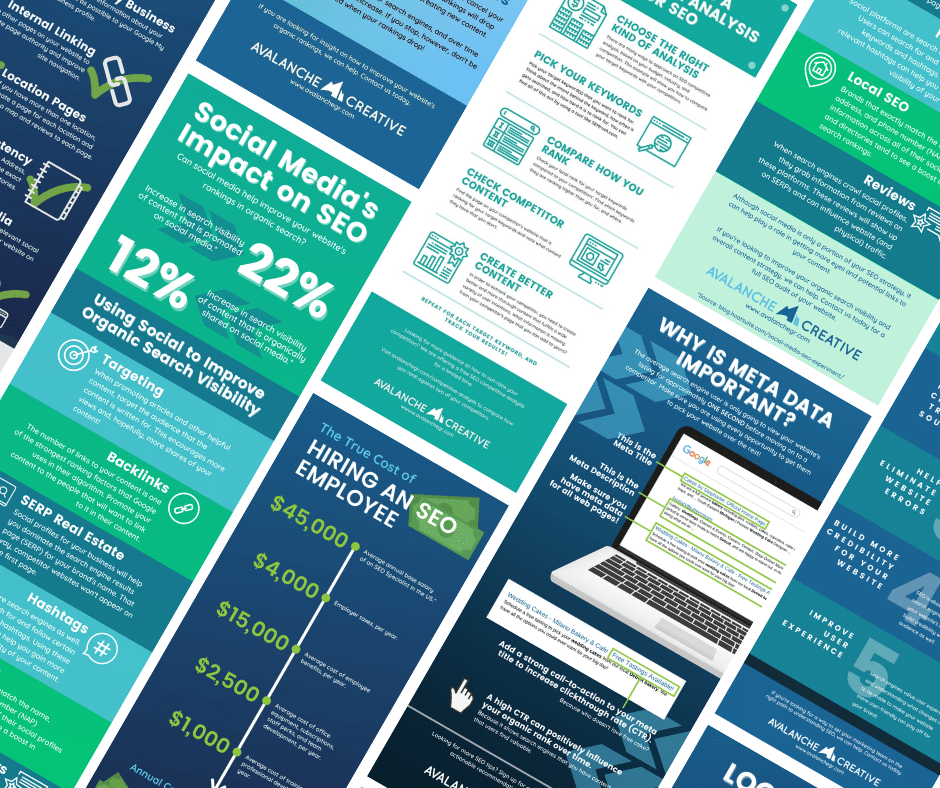Discover the signs that indicate it’s time to refresh your SEO strategy and stay ahead of the competition online.

Image courtesy of via DALL-E 3
Table of Contents
Introduction: What is SEO?
Search Engine Optimization, or SEO, is a crucial aspect of websites that helps them rank higher on search engines like Google. In simpler terms, SEO involves making changes to a website to improve its visibility when people search for specific keywords related to that site. Imagine you have a treasure chest (your website) hidden in a vast ocean of information (the internet), and SEO acts as the map that guides people (users) to find your treasure chest more easily.
What does SEO stand for?
SEO stands for Search Engine Optimization. It’s like giving your website a special code that search engines understand, making it easier for them to show your site to people searching for similar topics or products.
Why is SEO important?
SEO is crucial because it helps your website get noticed among the sea of other sites on the internet. When your website ranks higher on search engine results pages, more people are likely to visit it. Think of it this way: if there’s a popular lemonade stand at the front of a neighborhood, more people are likely to buy lemonade from it compared to a stand hidden in the backyard. SEO helps move your website lemonade stand to the front!
How does SEO work?
Search engines like Google have complex algorithms that analyze websites based on factors like keywords, content relevance, and website performance. By optimizing your website with the right keywords and high-quality content, search engines are more likely to show your site to users searching for information related to your website. It’s like having a magic spell that makes your website more visible and attractive to search engines and users alike.
Signs You Need to Update Your SEO Plan
Ensuring your website is optimized for search engines is crucial to attract more visitors and increase online visibility. However, there are key indicators that suggest it may be time to refresh your SEO strategy to stay ahead of the competition.
Drop in website traffic
If you notice a decline in the number of visitors to your site, it could be a sign that your current SEO plan is not driving enough organic traffic. Updating your strategy to target relevant keywords and improve your site’s ranking can help boost traffic.
Falling behind competitors
Monitoring your competitors’ search engine rankings can provide valuable insights into where your SEO efforts may be lacking. If you find that your competitors are consistently outranking you, it’s a clear signal that your SEO plan needs a revamp.
Outdated content
Search engines reward fresh and relevant content, so if your website has outdated or irrelevant content, it may not rank well in search results. Updating your content with current information and incorporating new keywords can help improve your site’s visibility.
Conducting an SEO Audit
When it comes to managing a website, Search Engine Optimization (SEO) plays a vital role in ensuring your site ranks well on search engine results pages. Conducting an SEO audit is as crucial as updating your SEO plan to identify areas for improvement and make necessary adjustments. Let’s dive into the key steps of an SEO audit.

Image courtesy of via Google Images
Checking website speed
One essential aspect of SEO is the speed at which your website loads. Search engines like Google prioritize websites that load quickly, as it enhances the user experience. You can use tools such as Google’s PageSpeed Insights to check your website’s speed and make improvements where necessary.
Analyzing keyword performance
Keywords are the terms or phrases that users type into search engines to find relevant content. Analyzing your keyword performance involves identifying which keywords are driving traffic to your site and which ones are not. Tools like Google Analytics can provide insights into the effectiveness of your keywords.
Reviewing backlinks
Backlinks, or inbound links from other websites to yours, are crucial for SEO. However, not all backlinks are beneficial. It’s essential to review your backlink profile to ensure that they are from reputable sources. Tools like SEMrush can help you analyze your backlinks and identify any that may be harmful to your SEO efforts.
Updating Keywords
Keywords play a crucial role in helping your website rank higher on search engines like Google. If your website is not ranking as well as you’d like, it might be time to update your keywords to reflect current search trends. Here are some steps to help you with that:
Using keyword research tools
Keyword research tools like Google Keyword Planner or SEMrush can help you identify popular keywords in your niche. These tools provide insights into search volume, competition, and other important metrics to help you select the right keywords for your content.
Identifying trendy keywords
Stay updated on the latest trends in your industry by using tools like Google Trends or BuzzSumo. These tools can show you which keywords are currently trending, allowing you to capitalize on popular topics and drive more traffic to your website.
Incorporating new keywords
Once you’ve identified relevant keywords, make sure to naturally incorporate them into your content. Avoid keyword stuffing, which is the practice of overusing keywords in an unnatural way. Instead, focus on creating high-quality content that provides value to your readers while incorporating your chosen keywords strategically.
Refreshing Content
Refreshing old blog posts is a great way to boost your website’s SEO. By updating the information with the latest trends, statistics, or insights, you can make your content more relevant and valuable to readers. You can also check for any broken links or outdated references, and replace them with current and reliable sources to improve the credibility of your post.

Image courtesy of via Google Images
Creating new content
Introducing fresh content regularly is essential for maintaining a dynamic and engaging website. Think about new topics or angles related to your niche that your audience might find interesting. You could write how-to guides, listicles, or opinion pieces to diversify your content and attract a wider range of readers. Remember to incorporate relevant keywords naturally into your new posts to improve their visibility on search engines.
Improving User Experience
When it comes to your website, it’s essential to make it easy for visitors to find what they need. This means organizing your content in a clear and logical manner so that users can navigate through your site without getting lost. Consider creating a simple and intuitive menu that directs users to different sections of your website. By designing a user-friendly navigation system, you can enhance the overall experience for your visitors.
Mobile-friendly design
With the increasing number of people using smartphones and tablets to access the internet, it’s crucial to have a website that is optimized for mobile devices. A mobile-friendly design ensures that your site looks good and functions well on smaller screens, providing a seamless experience for mobile users. By adopting a responsive design approach, you can reach a broader audience and improve your site’s SEO performance.
Engaging visuals
Visual elements such as images and videos can play a significant role in improving user experience on your website. Eye-catching visuals can capture the attention of your visitors and make your content more engaging. Consider using high-quality images and relevant videos to complement your text and enhance the overall appeal of your site. By incorporating visually appealing elements, you can create a more memorable and interactive experience for your users.
Utilizing Social Media
Social media platforms like Facebook, Instagram, and Twitter can be powerful tools to boost your website’s visibility and engage with your audience. By sharing your website content on social media, you can reach a wider audience and drive more traffic to your site.

Image courtesy of via Google Images
Sharing content on social media
When you share your blog posts, articles, or products on social media, you make it easier for people to discover your website. By including eye-catching images or catchy captions, you can grab users’ attention and entice them to click on your links. Additionally, sharing your content on different platforms increases the chances of reaching a diverse audience.
Engaging with your audience
Interacting with your followers on social media is crucial for building a loyal community around your brand. Responding to comments, messages, and mentions not only strengthens your relationships with customers but also encourages them to visit your website. By creating engaging conversations and discussions, you can drive more traffic and increase user engagement.
Using social media tools
Managing multiple social media accounts can be overwhelming, but with the help of social media management tools like Hootsuite or Buffer, you can schedule posts, track analytics, and monitor your performance effortlessly. These tools allow you to analyze your social media activities, understand what works best for your audience, and make data-driven decisions to optimize your social media strategy.
Measuring SEO Success
After updating your SEO plan, it’s essential to measure its success to see how well your changes are working. By tracking key metrics, you can determine if your efforts are paying off and make any necessary adjustments. Here are some ways to measure the effectiveness of your updated SEO plan:
Using analytics tools
Analytics tools are crucial for tracking the performance of your keywords and content. These tools provide valuable insights into how users are interacting with your website and help you identify areas for improvement. By analyzing data such as click-through rates and conversions, you can gauge the effectiveness of your SEO strategies and make informed decisions moving forward.
Tracking website traffic
Monitoring the number of visitors to your website is another important metric for measuring SEO success. By tracking traffic trends over time, you can see if your SEO efforts are driving more people to your site. An increase in website traffic indicates that your content is resonating with your target audience and that your SEO tactics are working effectively.
Assessing engagement
Evaluating user engagement metrics like bounce rates and session durations can provide valuable insights into how visitors are interacting with your website. A low bounce rate and longer session durations indicate that users are finding your content valuable and engaging. By monitoring these metrics, you can identify areas where users may be losing interest and make adjustments to improve user experience and keep visitors on your site longer.
Conclusion: Staying Ahead with SEO
Updating your SEO plan is not just a one-time task; it’s an ongoing process that requires constant vigilance and adaptation to stay competitive in the digital landscape. By regularly reviewing and improving your SEO strategies, you can ensure that your website continues to attract visitors and rank well on search engines.

Image courtesy of via Google Images
Summary of key points
In this article, we discussed the importance of SEO in helping websites rank higher on search engines and the signs that indicate when it’s time to update your SEO plan. We also covered the steps involved in conducting an SEO audit, updating keywords, refreshing content, improving user experience, utilizing social media, and measuring SEO success.
By checking website speed, analyzing keyword performance, reviewing backlinks, using keyword research tools, identifying trendy keywords, incorporating new keywords, updating old blog posts, creating new content, making navigation easy, ensuring a mobile-friendly design, using engaging visuals, sharing content on social media, engaging with your audience, using social media tools, measuring success with analytics tools, tracking website traffic, and assessing engagement metrics, you can effectively enhance your website’s SEO performance.
Closing thoughts
Remember, the digital landscape is constantly evolving, and what works today may not work tomorrow. By staying proactive and continuously updating your SEO plan, you can stay ahead of the curve, drive more traffic to your website, and ultimately achieve your online goals. So, don’t wait until your website starts to decline in rankings—start updating your SEO plan today and watch your online presence soar!
Frequently Asked Questions (FAQs)
What is an SEO plan?
An SEO plan is a strategy that helps websites improve their visibility on search engines like Google. It involves using techniques and tactics to optimize your website so that it ranks higher in search results when people look for relevant keywords.
How often should I update my SEO?
It’s recommended to review and update your SEO plan regularly, ideally every few months. Search engines frequently update their algorithms, and trends in keywords and content change over time. By staying up-to-date with these changes, you can ensure that your website remains competitive and visible to your target audience.
Can I do SEO myself?
Yes, you can definitely manage SEO on your own, especially if you’re willing to learn and put in the time and effort. There are plenty of resources available online to help you understand the basics of SEO and implement strategies to improve your website’s visibility. However, for more complex or technical aspects of SEO, you may want to consider hiring a professional to ensure the best results.







